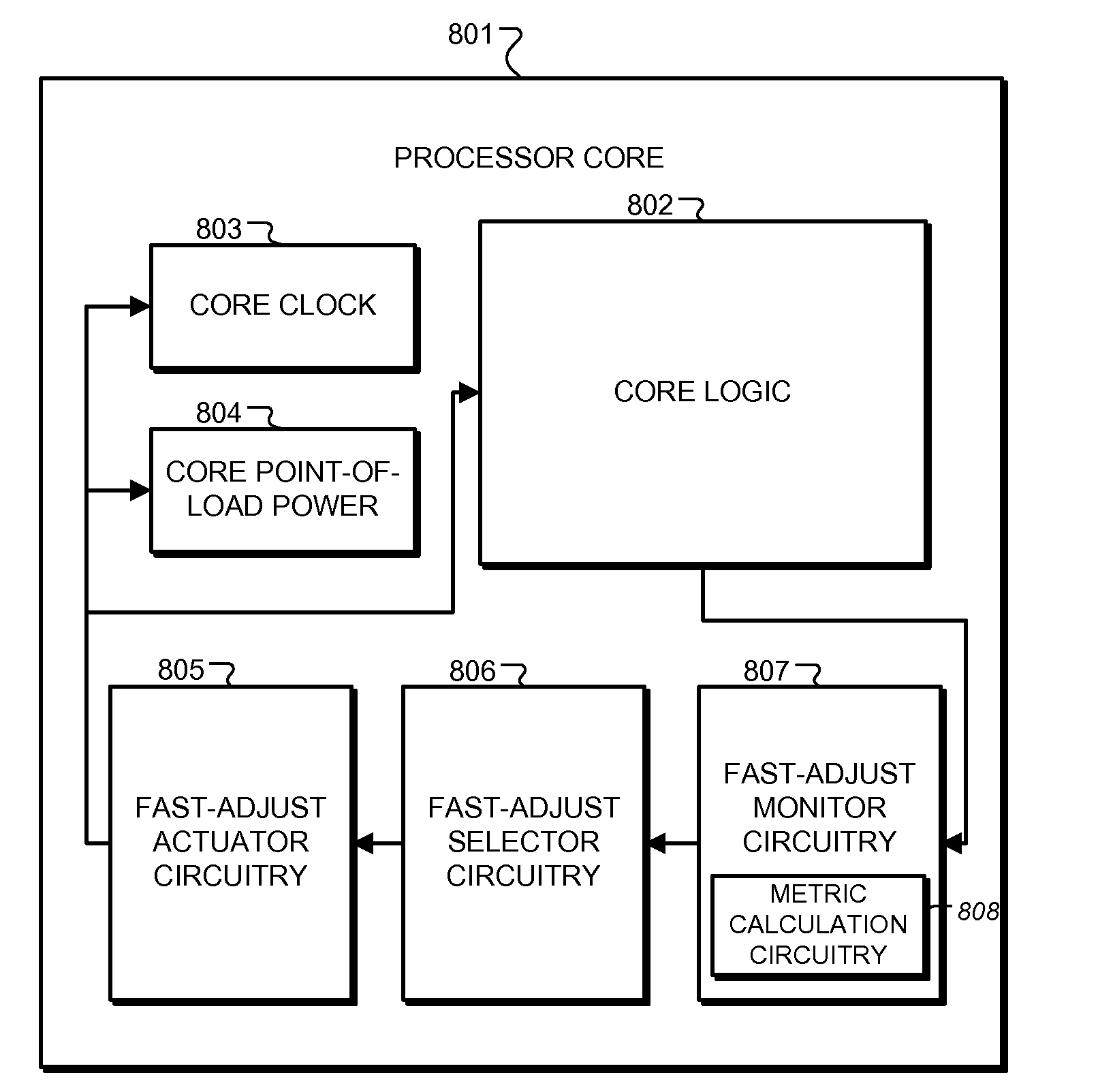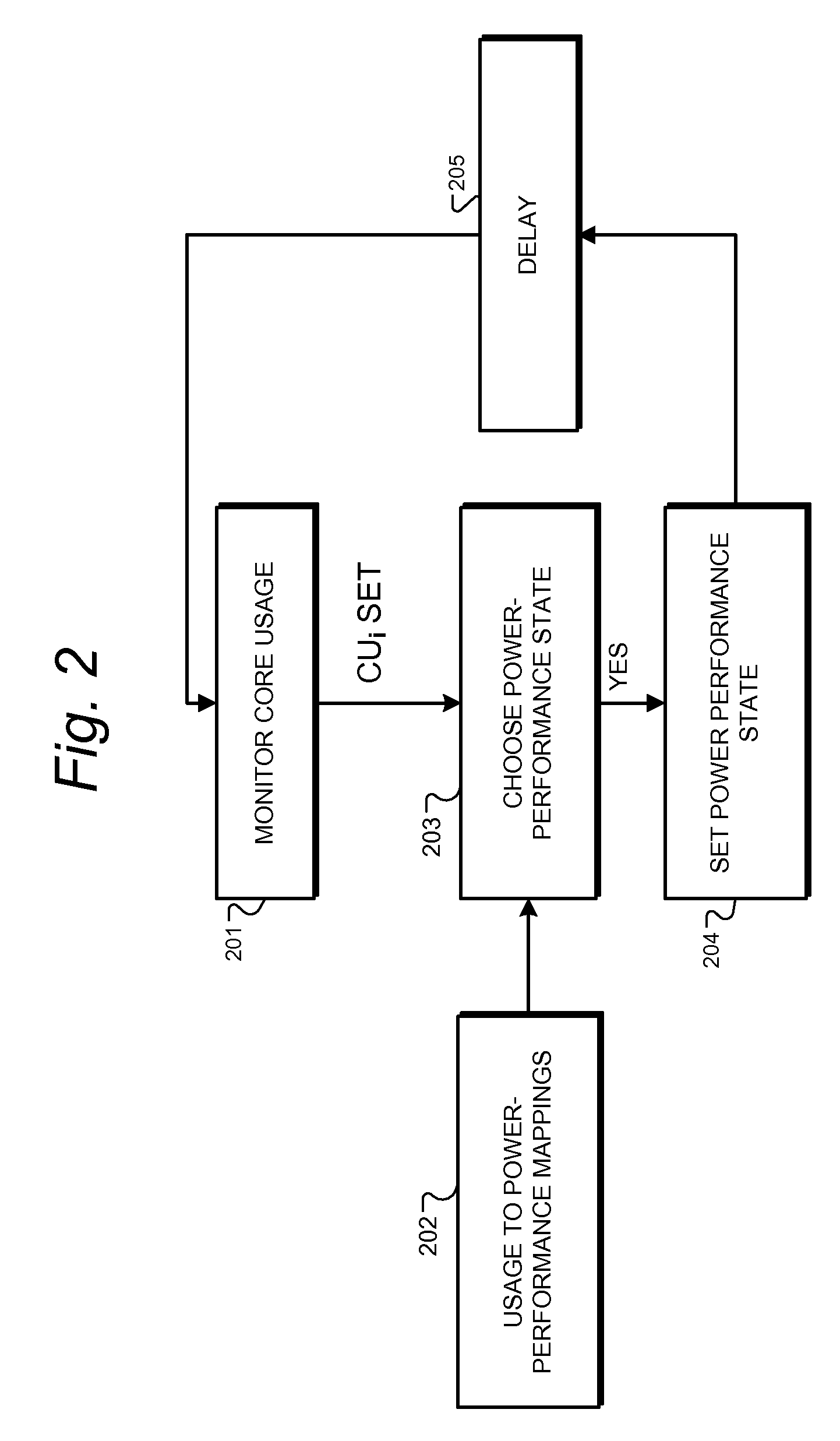Processor power management
a technology of power management and processors, applied in the field of microprocessor power management, can solve the problems of limiting the benefits that can be extracted using the state change mechanism, altering the performance level required from the hardware, and system software is therefore unable to adapt to the workload in a rapid fashion, so as to improve the power efficiency of the processor, and sacrifice any performance
- Summary
- Abstract
- Description
- Claims
- Application Information
AI Technical Summary
Benefits of technology
Problems solved by technology
Method used
Image
Examples
Embodiment Construction
[0019]FIG. 1 is a flowchart of a power-performance control scheme according to one embodiment. This version shows a simplified power-performance control scheme using a simple threshold level based on core usage. The depicted process takes place entirely in circuitry on a semiconductor device, without intervening operating system, software, or firmware steps involving instructions executed on the processor core on which power-performance is being controlled. At process block 101 a core usage metric is measured. The metric is further described below, but is preferably a quantity or ratio involving the number of instructions executed by the core on ongoing basis. Whatever metric is used, that value is input to the decision process block 103. At this step, the core usage (CU) is compared to a low threshold level (LT), which is shown as a configurable item at block 102. If the core usage metric is equal to or lower than the low threshold level, the process goes to the low activity power-...
PUM
 Login to View More
Login to View More Abstract
Description
Claims
Application Information
 Login to View More
Login to View More - R&D
- Intellectual Property
- Life Sciences
- Materials
- Tech Scout
- Unparalleled Data Quality
- Higher Quality Content
- 60% Fewer Hallucinations
Browse by: Latest US Patents, China's latest patents, Technical Efficacy Thesaurus, Application Domain, Technology Topic, Popular Technical Reports.
© 2025 PatSnap. All rights reserved.Legal|Privacy policy|Modern Slavery Act Transparency Statement|Sitemap|About US| Contact US: help@patsnap.com



